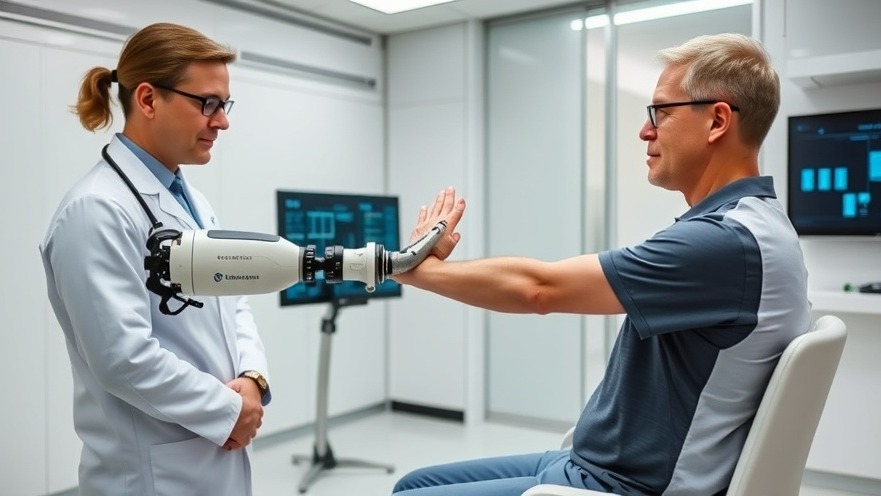
Harnessing Robotics: A Breakthrough in Treating Spasticity
In recent years, the field of rehabilitation has witnessed remarkable advancements, especially with the integration of robotics. One of the most exciting developments comes from researchers at UNIST, who have designed a pioneering robotic system capable of accurately quantifying upper limb (UL) spasticity. This advancement represents a significant shift from traditional approaches that often rely heavily on clinicians' tactile assessments, which can be subjective and inconsistent.
Understanding Spasticity and Its Impact
Spasticity, which affects many individuals with neurological disorders, results in abnormal muscle tightness and can severely impact mobility. Traditionally, assessing spasticity has been a challenge due to the varied and sometimes subjective nature of physical exams. With this new robotic solution, the evaluation process becomes more objective and standardized, catering to a patient population that deserves precise and effective care.
Revolutionary Robotic Methodology
The development team, led by Professor Sang Hoon Kang, has crafted a novel method for measuring spasticity by applying gentle forces to the patient's arms and measuring the resulting movements. This innovation could pave the way for more personalized rehabilitation strategies. The technology is specifically designed for rapid assessment, allowing even non-experts to conduct evaluations with high accuracy. This means better treatment plans tailored to individual patient needs.
Examining the Challenge of Residual Friction
While exploring this technology, researchers discovered a significant challenge: residual joint friction within the robotic system could compromise measurement accuracy. Surprisingly, high-quality rehabilitation robots like MIT-Manus still exhibit these frictions, affecting the trustworthiness of results. Understanding that many previous studies attributed inconsistencies in measurements to the human arm's nonlinear responses, this research highlights that the robotic apparatus itself is often the source of such nonlinearities.
Making Strides with Improved Control
To address the measurement inaccuracies caused by residual friction, the team implemented an Internal Model Based Impedance Control (IMBIC) strategy. This innovative control mechanism compensates for nonlinear behaviors induced by friction, enabling the robotic system to produce linear movements. By refining this aspect, the researchers drastically enhanced the accuracy of spasticity measurement, making it a reliable tool for rehabilitation specialists.
The Future of Rehabilitation Robotics
The potential for robotics in rehabilitation extends beyond spasticity measurement. As technological advancements continue to improve effectiveness and reliability, practitioners in the field are encouraged to consider how similar systems could be applied to diverse rehabilitation scenarios. This progression signifies an important momentum in the field, allowing for richer data on patient responses and outcomes, ultimately leading to better healthcare experiences.
Bridging the Gap Between Technology and Practice
For concierge health practitioners, integrating such innovative technologies is not just about keeping pace but about staying ahead of the curve. With spasticity being a common issue among patients, understanding the implications of this robotic development is crucial. Practitioners are urged to explore how advanced technologies can refine their diagnostic processes and enhance rehabilitation strategies, thereby enriching patient care. As healthcare evolves into a more technology-driven landscape, embracing these innovations will be essential.
Call To Action
Educating oneself about advancements like this robotic system is vital for any health professional wanting to lead in the ever-changing medical environment. Consider engaging with technology training workshops or reading more on rehabilitation robotics to enhance the care you provide. Embrace the change—discover how integrating new tools can drive your practice forward and elevate patient outcomes through precision medicine.
 Add Row
Add Row  Add
Add 




Write A Comment